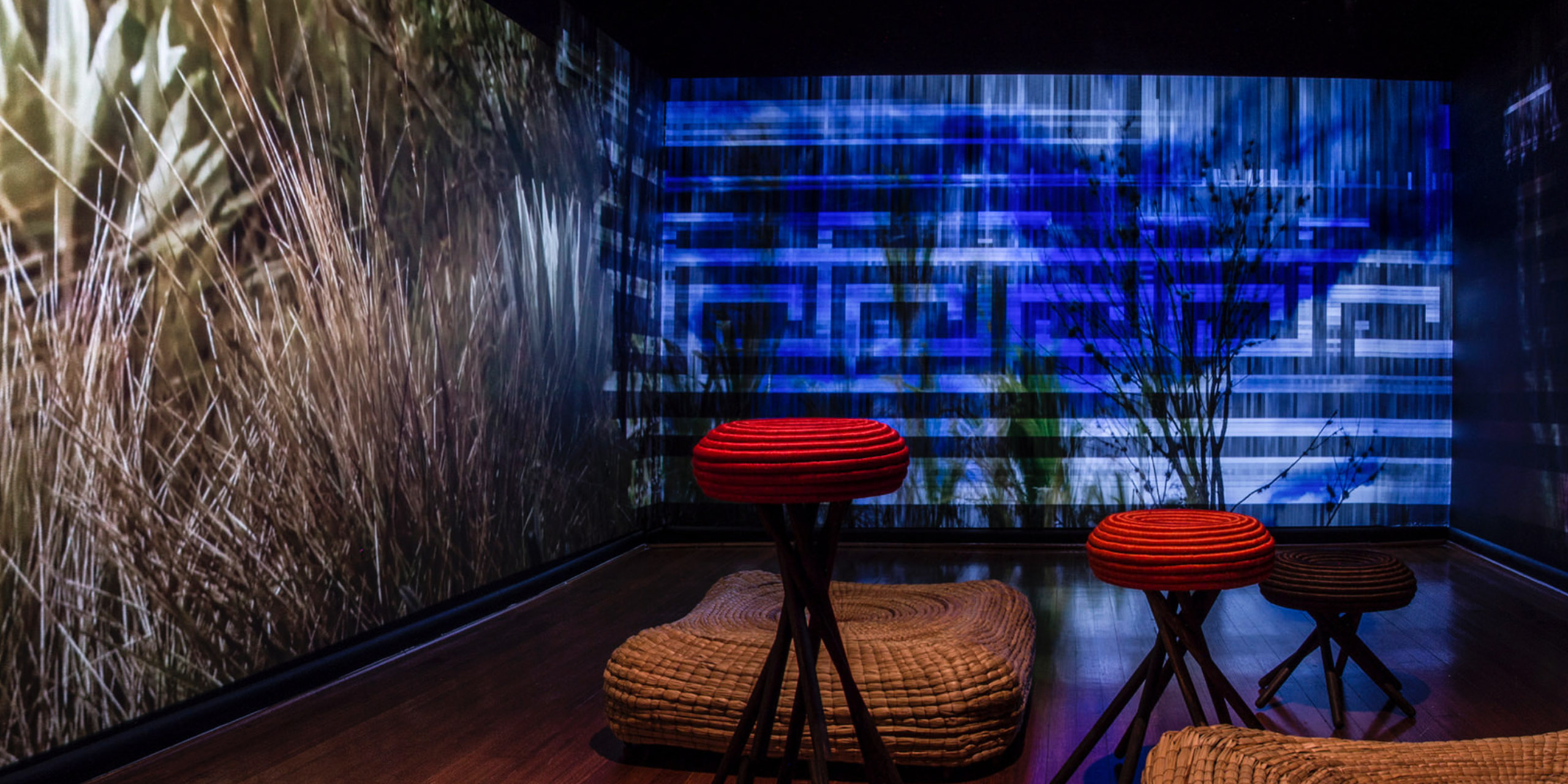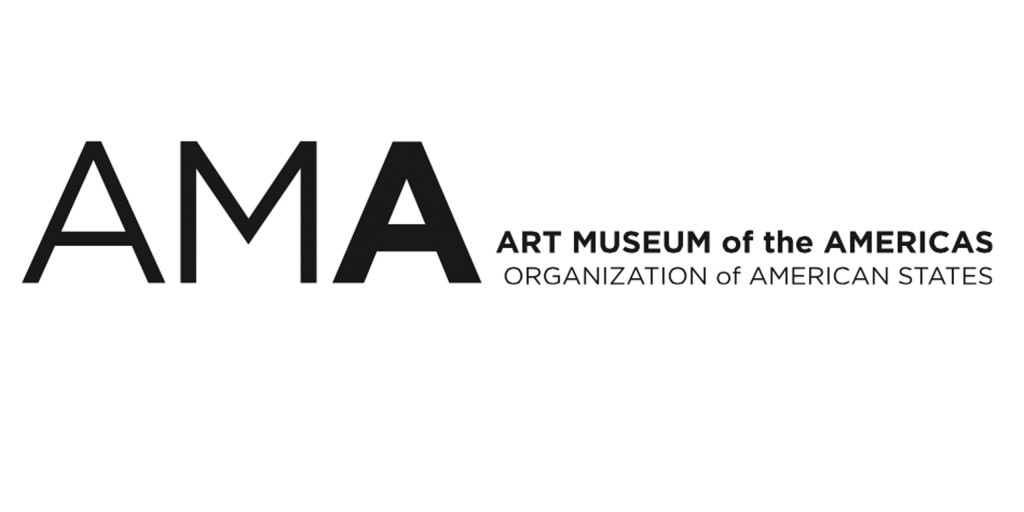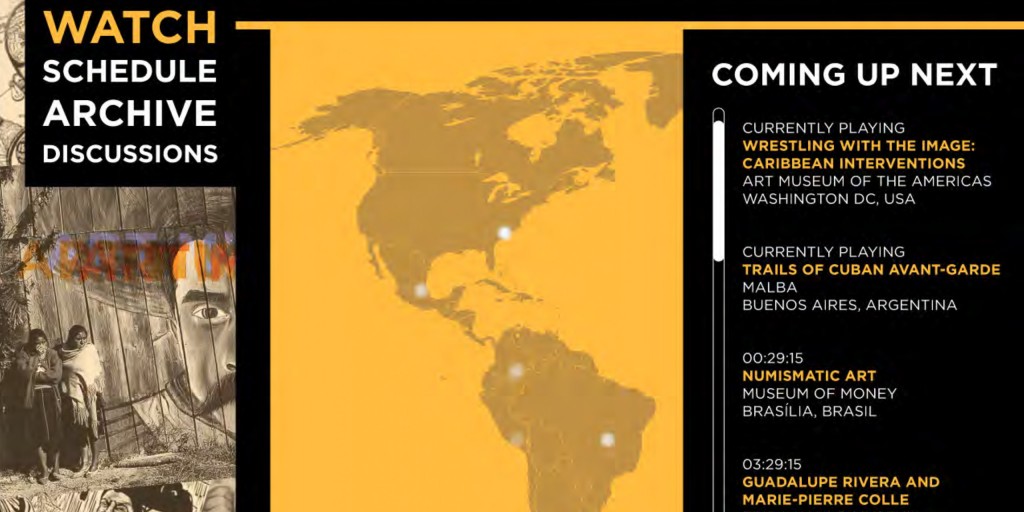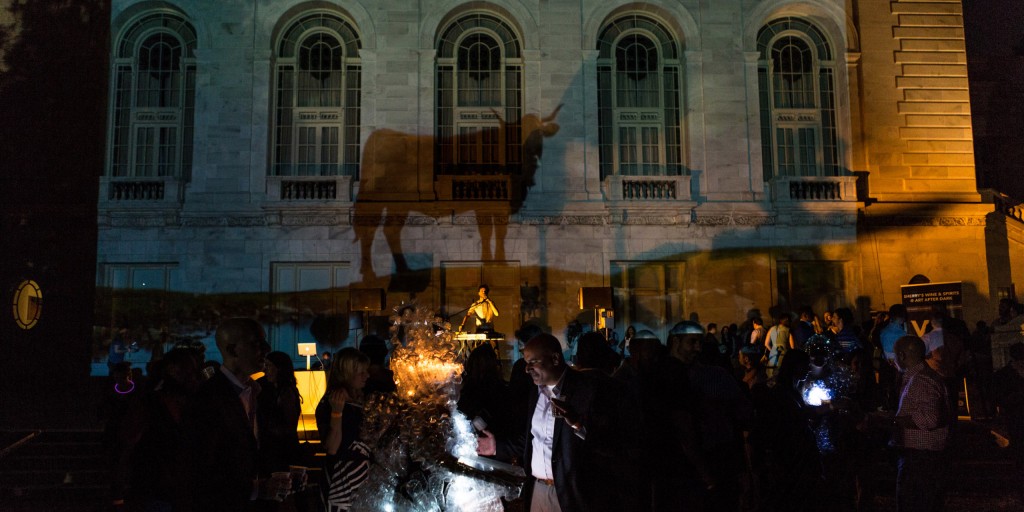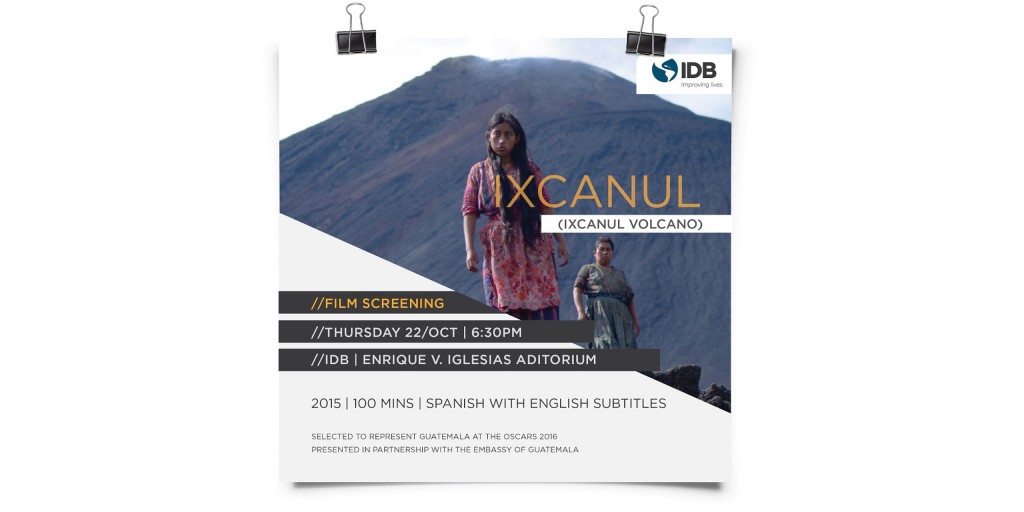Jon Goldman (Advertising + DM Concentration ’10) is the art collection curator and exhibition designer at the Inter-American Development Bank. With his work, Jon explores the intersection between creativity and development and utilizes exhibitions and communication design to work toward improving lives. Since graduating ArtCenter, Jon has worked for multilateral organizations in Washington, DC whose missions are to improve the lives of people in the developing nations of the Americas.
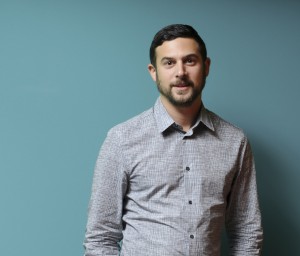 My friends seem to think that I’ve found my “career path.” I’m not so sure.
My friends seem to think that I’ve found my “career path.” I’m not so sure.
I spent nearly 10 years studying Chinese and earned a degree in Chinese Studies. At ArtCenter, I studied Advertising, but also greedily soaked up the Designmatters concentration. This summer, I completed my master’s degree in exhibition design. Renaissance man? Indecisive millennial? I don’t know.
Art Museum of the Americas
I’m not sure my Designmatters Fellowship ever really ended. When I graduated from ArtCenter in 2010, I was selected as the Designmatters Fellow at the Art Museum of the Americas (AMA) of the Organization of American States (OAS) in Washington, DC. My assignment was to redefine the communications strategy and design for the museum and cultural activities of the OAS, but I was drawn to the physical design of the exhibitions in the museum, as well. Afterward, I was hired on and spent four more years at the museum.
Working at AMA was an amazing opportunity. As part of the OAS, AMA presents art exhibitions that advance the overall mission of the organization, promoting human rights, peace, and security in Latin America and the Caribbean. A small and dedicated team (with an equally small budget) pulled together both compelling and thought-provoking exhibits.
AMA is museum boot camp. Since we were such a small team, I had the great fortune of wearing many hats. On any given day, I was moving artwork, painting walls, making labels, designing a website, project managing exhibit production, or putting on a tie to meet with an embassy official. I also served as board liaison and created fundraising events, including Art After Dark, where we had as many as 1300 guests attend an after-hours event at our little museum.
At AMA I discovered museums – well, as a field, anyway. Museums are unique institutions. They sort of work like universities – except the public is the student body and the exhibitions are the classroom. Museum workers come from all kinds of backgrounds and have a broad range of expertise, but they all join together to produce truly interdisciplinary works.
At first, my academic background may seem fragmented, but let me explain how I got here. When I lived in China and studied Chinese, I was fascinated by the propaganda from the days of Chairman Mao. I was drawn to both their aesthetics and their power. How does propaganda so effectively disseminate a new thought through society? While propaganda has negative connotations, why can’t there be positive propaganda? Why aren’t I making this positive propaganda? These ideas initially led me to advertising and then to Designmatters, as well. I believe communication design is essentially a pleasant term for propaganda.
At AMA I realized that exhibitions are just another form of communication design with the power to disseminate new ideas throughout society. Museums, unlike advertising, hold a sacred space in our culture and are revered as establishments that possess “the truth” – and their messages, therefore, are generally accepted by society as such. This makes museums a highly effective way of communicating ideas.
I could feel the power! I wanted in.
Exhibition Design
Exhibition design is the perfect field of study for any designer who wants to do everything and anything – especially one that has some dorky tendencies. While at AMA, I realized that in order to advance in the museum/exhibition field, I would need to continue my education. So I enrolled in the Corcoran School of the Arts and Design at George Washington University to pursue their M.A. Exhibition Design program.
From a technical standpoint, designers study both the 2D and 3D design of exhibitions, but also architecture, interior design, curatorial processes, object conservation, and museum management. For example, it is not enough to design a display case for an object. The designer must also consider the safety and preservation of the object: including light levels, airflow and toxicity, materials, security, how it opens, how it stays air-tight, etc.
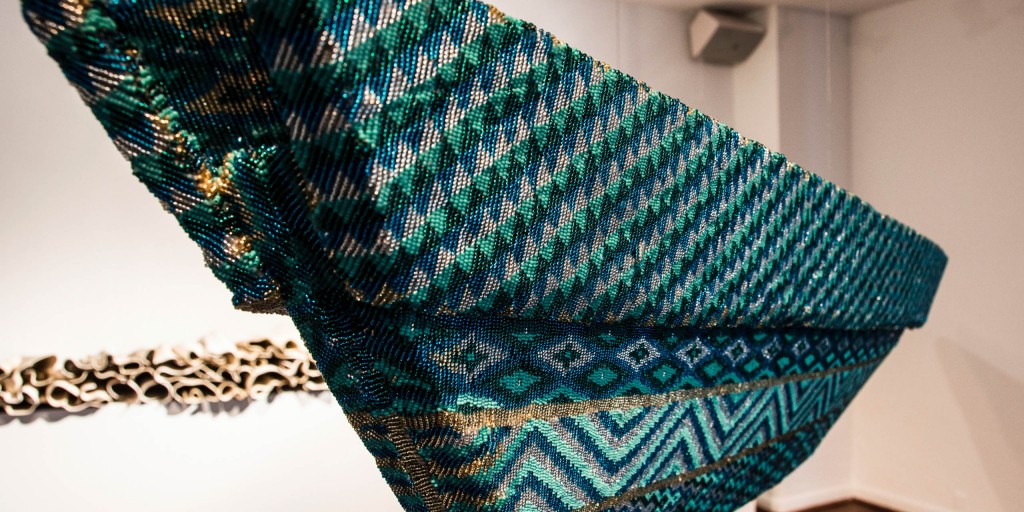
Image from “Waterweavers: The River in Contemporary Colombia Visual and Material Culture.” The exhibition used art to discuss issues surrounding weaving and the river in Colombia, including the preservation of indigenous craft and culture, pollution, and violence.
From an intellectual perspective, exhibition designers must develop expertise in the subject matter of each exhibit in order to effectively convey the desired message. While the curator does much of the academic heavy lifting, the designer must develop a deep understanding and appreciation for the subject. As an exhibition designer, you never stop learning at the workplace.
The culmination of all my studies in exhibition design was my final thesis – an exhibition proposal for an exhibition I created called Building a Canal, Constructing Race: Prejudice and Labor in the Panama Canal Zone. The exhibition aimed to shed light on the social construction of race by telling the story of the white, European laborers in the Panama Canal Zone that were segregated in ways that reflected the Jim Crow laws of the time in the continental United States. I designed a space where the museum would actively engage visitors to explore their own prejudices, drawing connections between the historical subject matter and the visitor’s life experience.
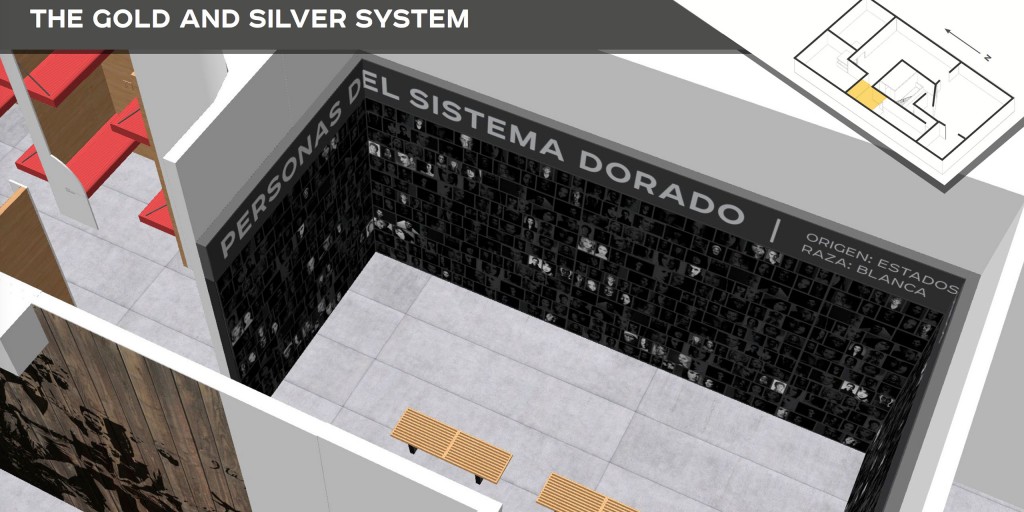
Image from my thesis exhibition proposal “Building a Canal, Constructing Race.” This gallery cycles through the various worker categories of laborers that built the Panama Canal. With each category, the faces of those laborers are illuminated on the wall. Visitors can see how the faces do not necessarily reflect the categories they might assume and can begin to see how race was constructed in the Canal Zone.
Inter-American Development Bank
This fall I accepted a position at the Inter-American Development Bank (IDB). I am the IDB’s new art collection curator and exhibition designer of the cultural center. However, once again I will be wearing many hats, including communication design and strategy.
While my work at the IDB is similar to what I was doing at the OAS, I am now part of a department that focuses on the intersection of the cultural industries, creativity, and innovation with development. Our division produces publications, provides grants, hosts international conferences (such as Demand Solutions), and produces exhibits and cultural programming.
One of my first projects at the IDB has been to combine all of the distinct roles of our division into a single image of our team’s work. Moving forward, we will go by the name IDB Creativity. Also, keep your eyes out for our new bilingual blog focusing on the role of the creative industries, arts, culture, and design in development work.
In terms of the IDB’s physical spaces, I am working on reimagining them, as well. While continuing to produce exhibits in the cultural center, I hope to align the presentation of the IDB’s art collection in all of our buildings with the overall mission of the bank. Some simple changes can help draw a closer connection between the role of art and culture in development work. I am currently just in the conceptual phase of another idea, too, for a non-profit design store as a means of encouraging visitors to come to our gallery space. This space would tell development success stories through the objects on display – a sort of design store/gallery hybrid.
Interdisciplinary Work
As a result of my experience at the Organization of American States and the Inter-American Development Bank, as well as working with different US and foreign government agencies and NGOs, I believe that creating real and positive change in the world takes an interdisciplinary approach. In my field – whatever you want to call it – a diverse skill set has helped me develop projects, programs, and exhibitions with a clearer perspective of all the actors and issues involved.
Designmatters was the first experience in my life that highly valued interdisciplinary collaboration – a skill that is critical for meaningful success in today’s world. The program gave me permission to be an intellectual wanderer and forge my own path in life. My Designmatters fellowship hasn’t ended, some five years later, because I have come to understand that Designmatters is more of a lifestyle than a field of study.
You can connect with Jon here —> www.linkedin.com/in/jonpgoldman
